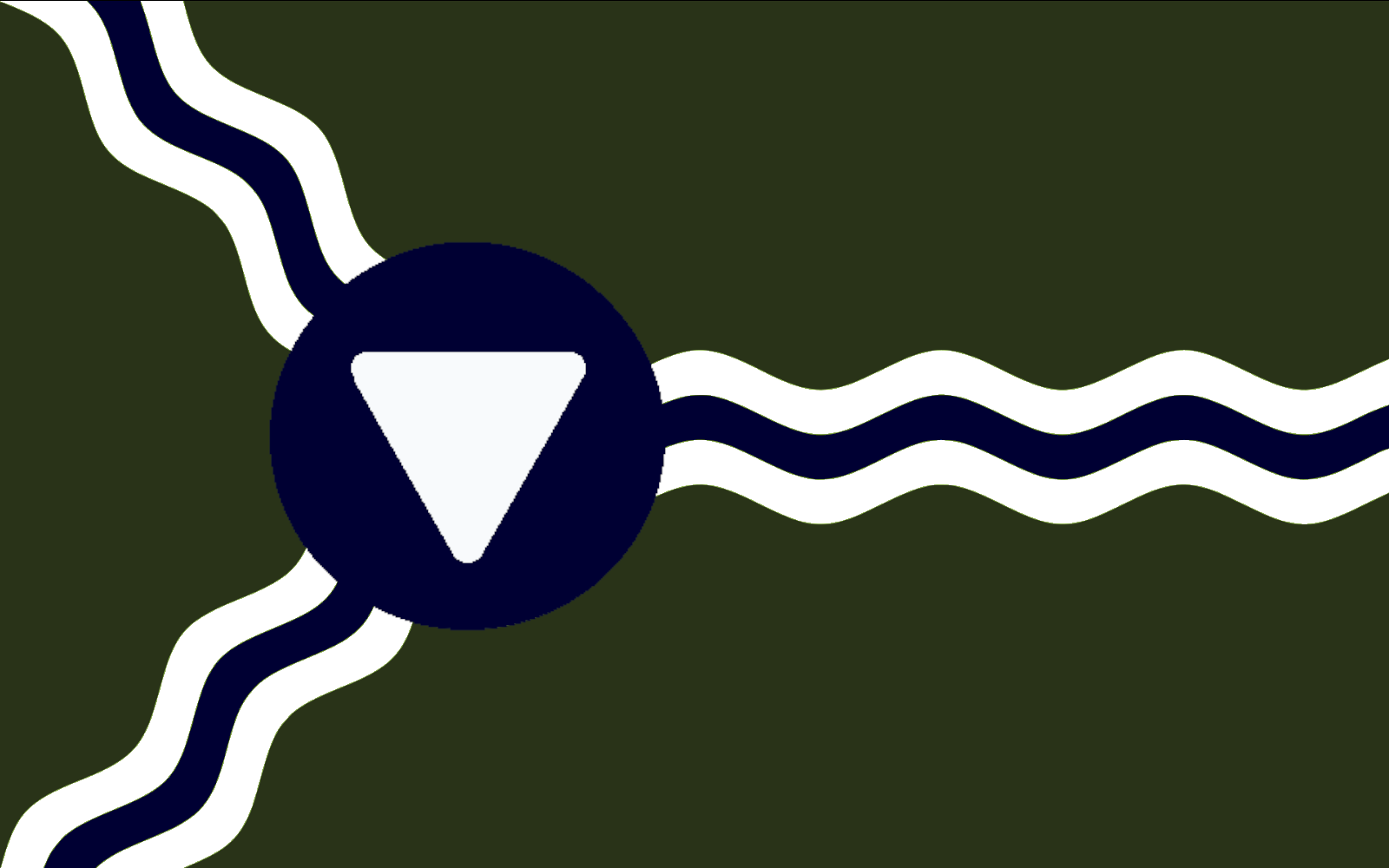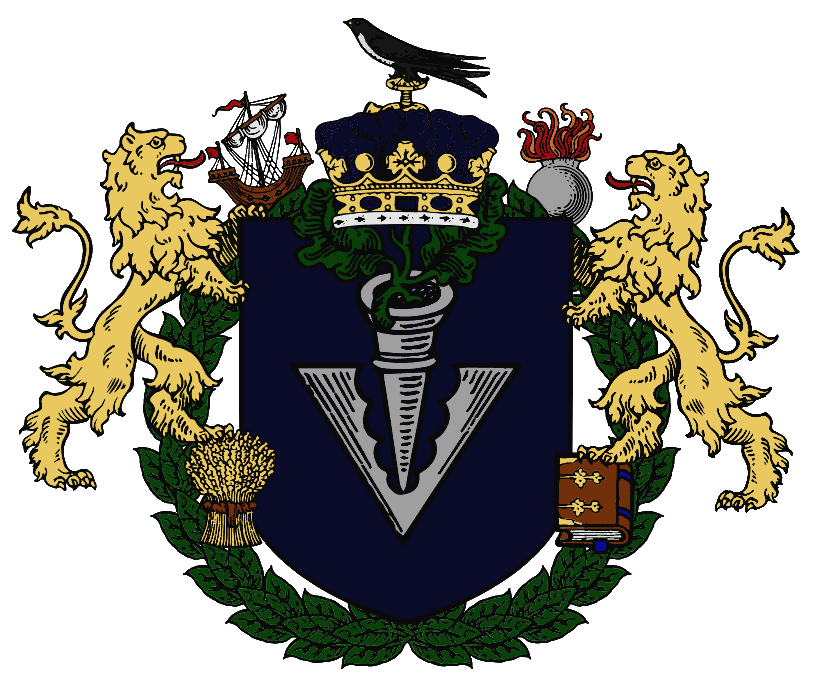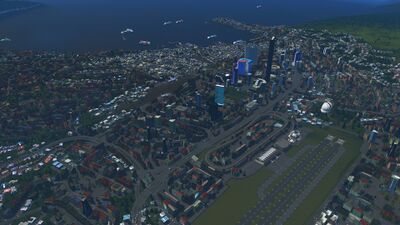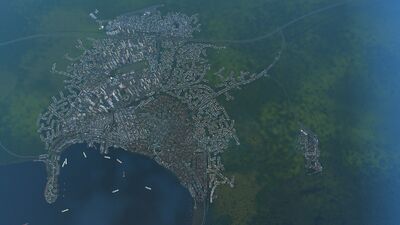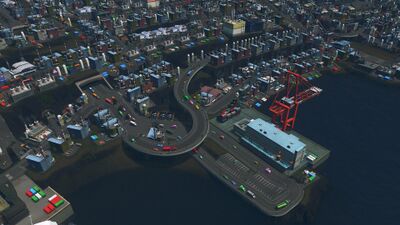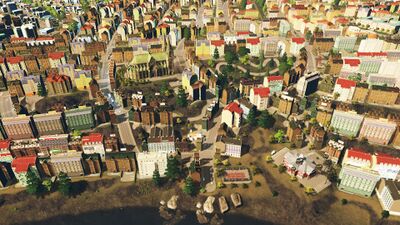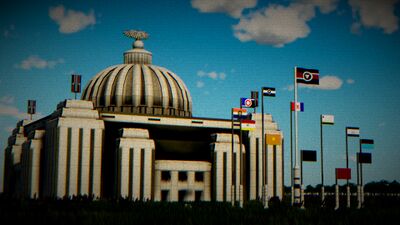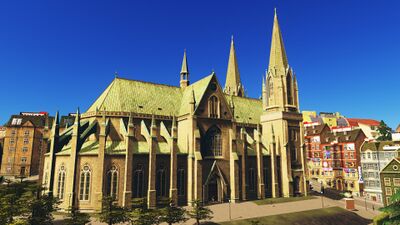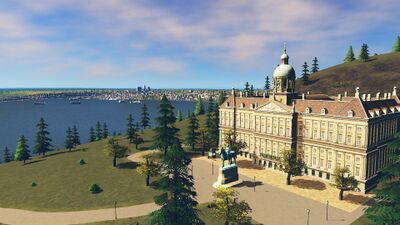Ezekialgrad
|
Ezekialgrad
|
|||||||
|---|---|---|---|---|---|---|---|
| Capital city | |||||||
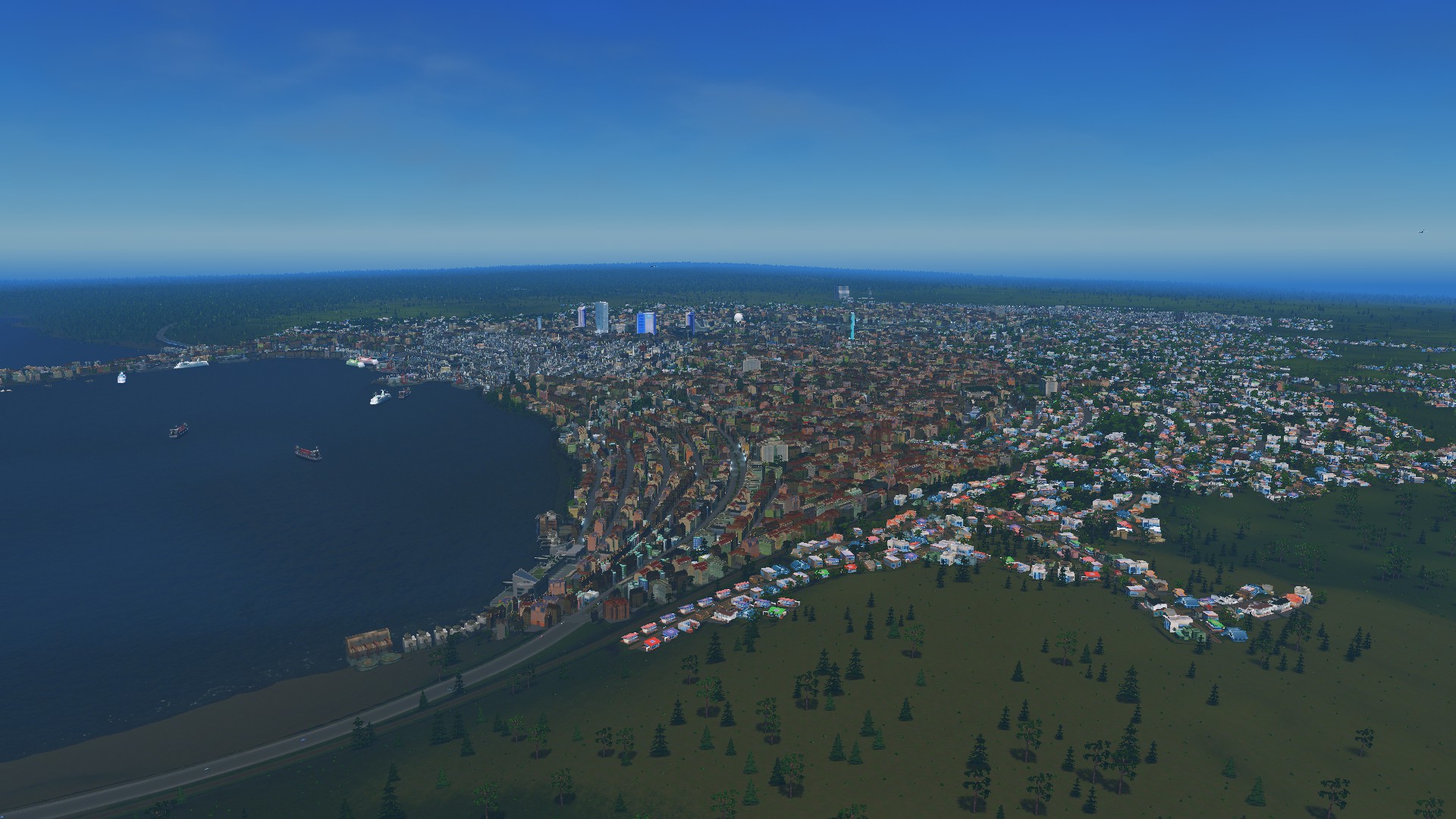 |
|||||||
| Ezekialgrad looking north | |||||||
| Location | Monta, Zokesia, The Confederacy | ||||||
| Coordinates | 15° 02' 29" N, 170° 41' 99" E | ||||||
| Founded | |||||||
| 400-800 CE | |||||||
| Urban Area | |||||||
|
|||||||
| Nickname | The Heart of Kolus | ||||||
| Population | 769,836 | ||||||
| Demonyms | Ezgradian | ||||||
| Elevation | 100 m (ASL) | ||||||
Ezekialgrad is the capitol and most populous city of Zokesia. The city's founding predates the establishment of the Kingdom of Zokeisa, and has seen growth for nearly two millennia following, with modern census estimating a population to surpass 800,000 by next decade. Ezekialgrad has been the capitol of The Confederacy from 2057 and 2149 respectively.
History
Ezekialgrad's founding date is lost to history, but historians estimate the area was settled as a community at least as early as 450 BC, when the Zokes were still a tribal community. The population was probably around 400 people fishing in Ezekia Bay and hunting game on the Monta plains. In the 4th Century BC, Kjolsen suffered huge famines. Zokesia suffered as well, but not nearly as much because of their toughened and still mostly hunting lifestyle. The northern horde of barbarians saw this chance, and swept down on Kjolsen, destroying it. In the centuries thereafter, warring states fought over the prosperous farmland in the Monta planes, but the formation of Zokesia in the 9th century as a state had little effect on the small community. King Ezekiel I of Ward built Ward College and funded the construction of Ward Cathedral in the city. His generous donations and popularity in Zokesia led to the community in which he built the cathedral to be named after him, and thus, Ezekialgrad was born.
In the 1100s, following the death of King Debulist I, several rival claimants to the Zokesian throne emerged. Among them were Debulist II (recognised as king by the Bosmynthians after the death of Codal Dainbrudge), Hallon Halcodrada (King of Halco who claimed to be the rightful heir of the Crater) and Duke Cira II of Ward. Hallon and Cira both invaded separately in 1120. Debulist II successfully repelled the invasion by Hallon, but ultimately lost the throne of Zokesia to Cira the Conquerer. The capitol of Zok was temporarially moved to Ezekialgrad in the conflict. After the Battle of Hochland on 14 October 1120, Cira the Conqueror made permanent the recent removal of the capital from Zoke to Ezekialgrad. The city saw much growth with the change in status, and by the 1400s trade began shifting from southern ports such as Bayl and Notilian to Ezekialgrad and Freetowne.
Districts
Old Town
The original town of Ezekialgrad sat closer to the southern end of Ezekia Bay, nestled into the plains that stretched from the Crater Range in the south to the Freetowne Isthmus. The city grew in size slowly for its first century of existence, with many Zokesians choosing to live in rural communities over the bustle of city life. A distinct divide between Freetowne to the north, where the busy shipping and trade occured, and the economic south of Ezekialgrad, where manufacturing and trade occured, was separated by farmland. The distinct Edwardian style of late 1800s architecture is still present in much of Old Town, where the red rooves and brick houses have stood for nearly 500 years. Much of old town is residential blocks and a large percentage of the city's population still lives in this area. In the Southeast, so-called "College Town" stands south of the ancient Ward College and features a rectangular district that has since become the center of cultural life in the city.
Freetowne
To the north, Freetowne was established largely due to the large isthmus that marked the north end of Ezekia bay which made achoring ships decidedly more safe than in the south, in the capitol city directly. Due to this geographic quirk of the bay, much of the trading and shipping went through Freetowne before heading south to Ezekialgrad and onto the rest of the nation. Freetowne today is marked by heavy industrial warehouses, factories, and port facilities.
Downtown
The industrial revolution in the 1900s led to an explosion of production and industry in the region, and the farmland separating Ezekialgrad and Freetowne was quickly gobbled up by factories during this time period. New Downtown was built in between the two cities and blurred the lines of where one began and the other ended. The modern downtown landscape was built within the last 100 years, and from 2100 onward saw a boom of growth with many skyscrapers and high rise buildings coming into fruition. Ezekialgrad Inernational Airport was built east of the Downtown center, between it and the Kolus Road which linked the city to the rest of Kolus. Today, heavy traffic and inter-city train lines mean Downtown Ezekialgrad is one of the busiest landscapes in the world.
East Ezekialgrad
As the city's borders pushed outward in the 2150s, Cyten-Ward Industries purchased nearly 30,000 acres of land east of Kolus Road to build a new super factory site. Dubbed "East Ezekialgrad", the sprawling complex makes up 20% of the total industry of the city and nearly 25% of the population. East Ezekialgrad has its own airport, Spacecraft production building and launch site.
Ezekialgrad AFB
The largest air base in Monta, Ezekialgrad Air Force Base houses both multiple squadrons of fighters and bombers of the Zokesian Royal Air Force but also a large number of divisions of the Zokesian Royal Army.
Notable Landmarks
Die Volkshalle Nationalversammlung Konföderierten or Confederate People’s National Assembly, was built in 2086 at the request of Francisco Grail for a united assembly building for the newly formed Arcovii-Zokesian Federation. Today, it serves as the seat of the Condederacy of Kolus in the center of Ezekialgrad.
